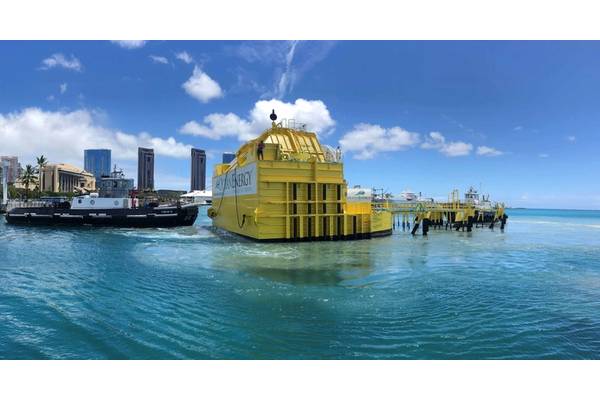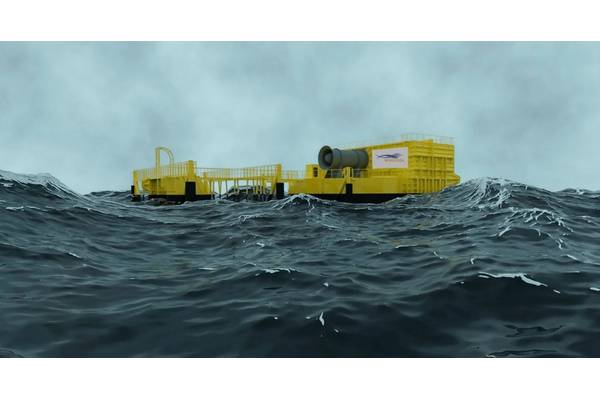

The WEDUSEA project, involving 14 partners across offshore energy industry and academia, has received a formal go-ahead from the European Union, bringing the developers one step closer to the deployment of 1 MW wave energy device offshore Scotland.
Co-funded by the EU Horizon Europe Program and UK’s innovation agency Innovate UK, the $22 million (€19.6 million) WEDUSEA project has undergone a comprehensive independent review by EU appointed external experts following its initial project design period to ensure the technical designs and all plans, budgets and protocols are fully in place and approved.
Having received the green light from the EU, WEDUSE project has stepped closer to the demonstration of a grid connected 1 MW OE35 floating wave energy converter at the European Marine Energy Centre (EMEC) wave energy test site at Billia Croo in Orkney, Scotland.
The two-year demonstration in Atlantic wave conditions will involve rigorous technical and environmental assessment of the device, developed by Irish firm OceanEnergy.
OE35, the world’s largest capacity floating wave energy device, incorporates a trapped air volume, with the lower part open to the sea. Wave pressures at the submerged opening cause the water to oscillate and drive the trapped air through a turbine to generate electricity.
Electricity generated will be exported to the UK grid via EMEC’s subsea cables.
“Wave energy is the world’s most valuable renewable resource with around 30TWh of potential annual production waiting to be harnessed. That’s almost ten times Europe’s annual electricity consumption.
“However, this potential has yet to be fully realized. The project will demonstrate that wave technology is on a cost reduction trajectory and will thus be a stepping stone to larger commercial array scale up and further industrialization. We predict that the natural energy of the world’s oceans will one day supply much of the grid,” said Tony Lewis, Chief Technical Officer at OceanEnergy.
The WEDUSEA project will be delivered in three phases, with the first involving the initial design and build of a device suited to the ocean conditions at EMEC’s Billia Croo wave energy test site.
This will be followed by the second phase, which entails the demonstration at the site, lasting two years.
The final phase will be commercialization and dissemination which sees the capitalization and exploitation of the results.
The wave converter build-out will start in the second half of 2024 and the demonstration at EMEC is expected to begin in June 2025.